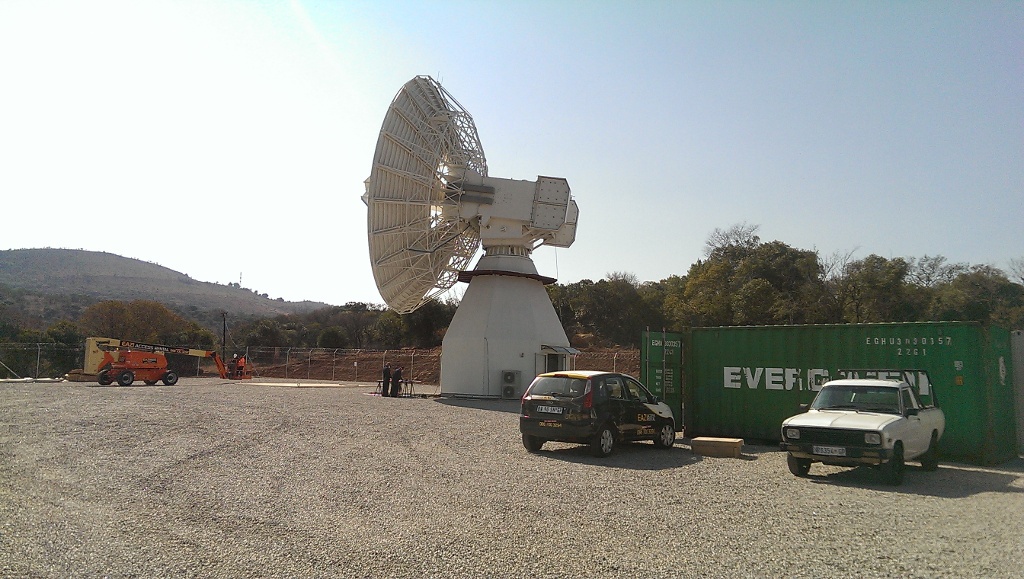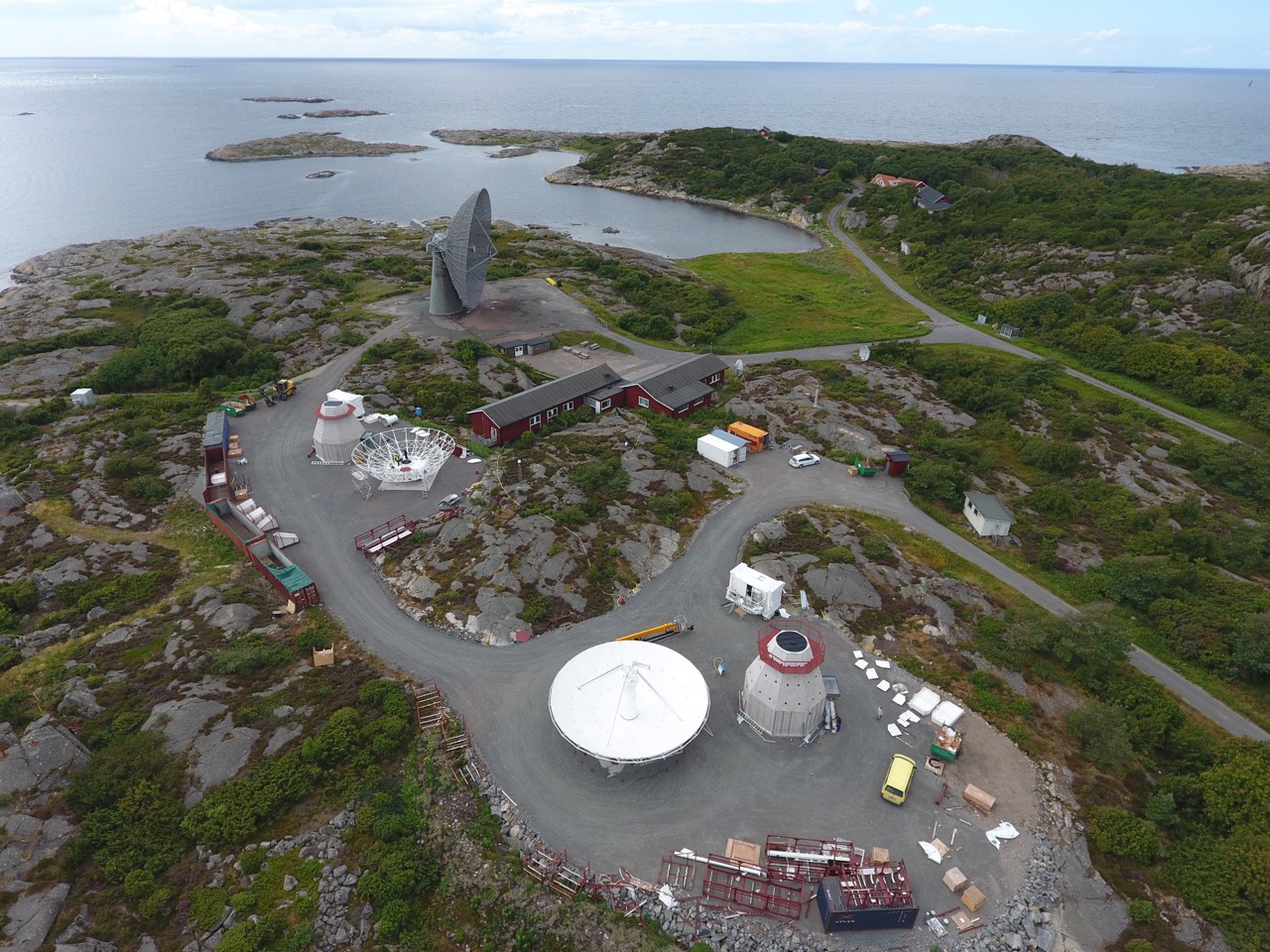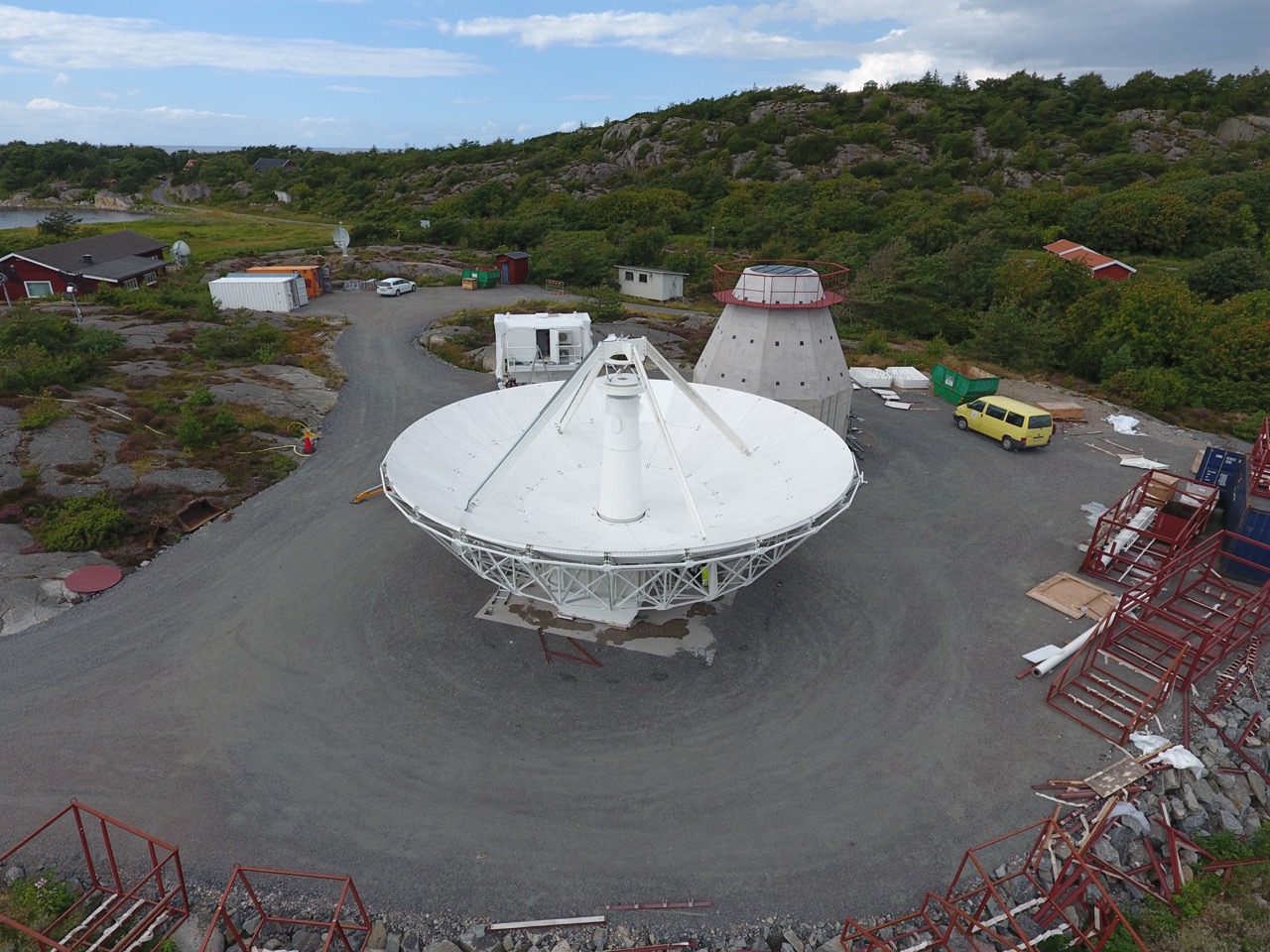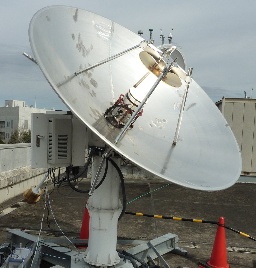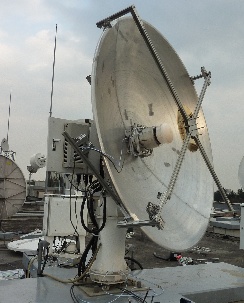...
Gerhard Kronschnabl and Alexander Neidhardt - 24 Feb 2016
Ishioka
- Operation of Ishioka antenna is now under interruption because of construction of operation building, and will resume after April.
- Modification of cryogenic dewar for QRFH system is being done.
...
HartRAO
Current status: Panel alignment is underway (last results were around 90 microns).
Commissioning tests are to be started in the beginning of August.
We have a live camera feed up and running (updated every minute) which can be accessed at: http://www.hartrao.ac.za/xxvgs_liveview.php
Photos from HartRAO VGOS site (14 July 2017)
For updated videos and photos please visit:
Philip Mey - 21 July 2017
Ishioka
- Operation of Ishioka antenna is now under interruption because of construction of operation building, and will resume after April.
- Modification of cryogenic dewar for QRFH system is being done.
Yoshihiro Fukizaki - 28 Jan 2016
Onsala
Rüdiger Haas - 26 May 2016
Shanghai
Foundation construction now to start at the end of February. - Update from Guangli, 25 Jan 2017
Finally the construction company was determined from competitive tender, for the foundation. Yesterday the contract was signed. There are still uncertanties before the real construction work, the approvement of fire control and enviromental protection. These may take two weeks, or more than one month. After this, the foundation construction could be finished in 4 months, and another ~5 months for antenna installation and station systems integration.
Guangli Wang - 1 Dec 2016
The antenna is ready but there are some delays with the approval of the foundations. The foundations will be installed no earlier than October so construction will not start before then. The Shanghai VGOS antenna will be ready for its first test observations around the middle of 2017
Guangli Wang - 28 April 2016
Construction of the antenna foundation and tower to be completed by June, with observations starting before the end of this year.
VGOS system will be 16 Gbps, cover 2.7 to 15.5 GHz with 1 GHz bandwidths.
Guangli Wang - 13 Feb 2016
AuScope (Hobart, Katherine and Yarragadee)
A Report on the results of testing with the Callisto feed on the Hobart 12m were released to the VTC in December. Work is continuing to understand the larger than expected Tsys contribution from the antenna, including examination of antenna optics, surface accuracy and return loss.
We expect delivery of all three receivers by mid-2017. There is currently a funding shortfall which prevents us from purchasing three DBBC units that are fully VGOS compatible. The current thought is that we will fully upgrade Hobart but delay Ke and Yg until additional funding has been secured.
Jim Lovell - 24 Jan 2017
Report on Callisto feed tests on Hobart 12m will be sent to the VTC soon.
Jim Lovell - 1 Dec 2016
Testing of the prototype Callisto feed was completed on the Hobart 12m in August, finishing with a successful fringe test with Ishioka and Kashima. A report on the Australia-Japan broadband fringe tests is available. The receiver operated reliably and stably throughout, installation and operating procedures went smoothly. We are continuing to work on optimising the antenna optics. Still on track for a January arrival of the production systems.
Jim Lovell - 25 Aug 2016
---
Prototype testing on Callisto feed/receiver system at Hobart due for completion in mid August. The system is performing well but some issues with the 12m optics need addressing: subreflector optimization has helped but more work is required.
Fringe checks are planned with Hobart 26m, Kashima and maybe Ishioka and Kokee if there’s time.
Timeline is for delivery of production systems in January, with installation at all sites by June 2017. Possibility of observing below 3 GHz is questionable.
AuScope Operations funding OK until 1 July 2017 (140 days of observing). Work planned over next 11 months:
- Elevation jackscrew at Yg to be replaced
- Maintenance on Hb maser (will not interrupt operations)
- New azimuth cable wrap mechanisms to be installed at all sites before/during broadband upgrade. Same mechanism as Kokee
Jim Lovell, 28 July 2016
---
Initial testing of Stirling Cycle broadband system has been completed at Hobart. Upgrade of all three sites to broadband planned to be completed by mid 2017 (was hoped to be by the end of 2016).
The prototype is now back in Hobart and will be installed on the 12m in about a week.
Tests of Dynamic Scheduling with the three AuScope antennas and others (most recently Hart 26m) are continuing with the next observations planned for June.
Jim Lovell - 26 May 2016
Kashima 34m
- We replaced 1.6m dish with 2.4m Cassegrain optics of MARBLE1 station at NMIJ(Tsukuba) in March. Now we have two 2.4m dish at NICT(Koganei in Tokyo) and NMIJ( Tsukuba)
Marble1
(Tsukuba)Marble2
(Koganei)
- Broadband observation sessions conducted in 2016 were performed with 2048Msps-1bit-4ch mode. Frequency array was:
Lower_edge ( Center Freq)=
3188MHz(3700), 4788MHz(5300), 9588MHz(10100), 12788MHz(13300)
5388MHz(5900), 6588MHz(7100), 8188MHz(8700), 10088MHz(10600)
3288MHz(3800), 5388MHz(5900), 8188MHz(8700), 10088MHz(10600) - If any station can do broadband fringe test observation (1GHz bandwidth for single channel), we are pleased to be a counterpart of the experiment. We will make correlation and provide the results. Frequency array can be arranged flexibly.
- Comments on Broadband Observation.
- Broadband Data acquisition has advantage in tolerance to RFI. It is preferable to be broadband at the stage on analog/digital conversion.
- I prepared a stuff on RFI for TOW meeting at Haystack. It tells our status of receiving signal and RFI conditions.
- URL: http://www2.nict.go.jp/sts/stmg/ivstdc/siryou/2017/IVS-TOW/RFI-TOW2017sekido.pdf
Mamoru Sekido - 26 Apr. 2017
Yebes
We are taking part in the biweekly 24 hour VGOS tests. For those observations we use 4 RDBE-G units, 500 MHz bandwidth each band and polarization. We do not plan to make any hardware update in the near term. Our next mid-term goal is installing a combination of filters that will filter out frequencies below 3 GHz but will allow the passage of the legacy S band. That should allow us to install two amplifiers per polarization and not saturate the optical fiber amplifiers.
Pablo de Vicente - 25 Jan 2017
Onsala
Rüdiger Haas - 26 May 2016
Shanghai
Finnally the construction company was determined from competitive tender, for the foundation. Yesterday the contract was signed. There are still uncertanties before the real construction work, the approvement of fire control and enviromental protection. These may take two weeks, or more than one month. After this, the foundation construction could be finished in 4 months, and another ~5 months for antenna installation and station systems integration.
Guangli Wang - 1 Dec 2016
The antenna is ready but there are some delays with the approval of the foundations. The foundations will be installed no earlier than October so construction will not start before then. The Shanghai VGOS antenna will be ready for its first test observations around the middle of 2017
Guangli Wang - 28 April 2016
Construction of the antenna foundation and tower to be completed by June, with observations starting before the end of this year.
VGOS system will be 16 Gbps, cover 2.7 to 15.5 GHz with 1 GHz bandwidths.
Guangli Wang - 13 Feb 2016
AuScope (Hobart, Katherine and Yarragadee)
Report on Callisto feed tests on Hobart 12m will be sent to the VTC soon.
Jim Lovell - 1 Dec 2016
Testing of the prototype Callisto feed was completed on the Hobart 12m in August, finishing with a successful fringe test with Ishioka and Kashima. A report on the Australia-Japan broadband fringe tests is available. The receiver operated reliably and stably throughout, installation and operating procedures went smoothly. We are continuing to work on optimising the antenna optics. Still on track for a January arrival of the production systems.
Jim Lovell - 25 Aug 2016
---
Prototype testing on Callisto feed/receiver system at Hobart due for completion in mid August. The system is performing well but some issues with the 12m optics need addressing: subreflector optimization has helped but more work is required.
Fringe checks are planned with Hobart 26m, Kashima and maybe Ishioka and Kokee if there’s time.
Timeline is for delivery of production systems in January, with installation at all sites by June 2017. Possibility of observing below 3 GHz is questionable.
AuScope Operations funding OK until 1 July 2017 (140 days of observing). Work planned over next 11 months:
- Elevation jackscrew at Yg to be replaced
- Maintenance on Hb maser (will not interrupt operations)
- New azimuth cable wrap mechanisms to be installed at all sites before/during broadband upgrade. Same mechanism as Kokee
Jim Lovell, 28 July 2016
---
Initial testing of Stirling Cycle broadband system has been completed at Hobart. Upgrade of all three sites to broadband planned to be completed by mid 2017 (was hoped to be by the end of 2016).
The prototype is now back in Hobart and will be installed on the 12m in about a week.
Tests of Dynamic Scheduling with the three AuScope antennas and others (most recently Hart 26m) are continuing with the next observations planned for June.
Jim Lovell - 26 May 2016
Kashima 34m
- 34m antenna ACU trouble was fixed. There are no significant change and progress at 34m station.
- Broadband 24h experiment was conducted between MBL1-MBL2-Ishioka13 stations. Purpose was to check improvement of residual and precision in geodetic observation. Since precision of delay observables have been exceeding the post fit residuals in Kas34-MBL1-MBL2 observations and it has been indicating troposphere is the limiting factor of geodetic/frequency transfer VLBI. I expected improvement by fast switching with Ishioka-MBL1-MBL2 network. Though the network is small and elevation angles are almost the same for all stations, thus it seems that independence of parameter estimation of Atm is not good enough, unfortunately. Experiment was in 12-13 Sep. and correlation processing has finished. We will try to see the analysis next week.
Mamoru Sekido - 22 Sep. 2016
Yebes
Broadband system temperatures are ~ 50 K - 70 K. The warm amplifiers after the cryogenic ones and before the optical fiber converters had to be removed to avoid saturating the amplifiers used to modulate the optical laser. This increased the Tsys by a factor 2. Furthermore one of the optical channels uses an 18 dB amplifier and the other one 9 dB. This is an issue to be solved in the future.
...
G. Tuccari - 26 May 2016
We are working for exchanging 1.6m dish with 2.4m dish of MARBLE1 station at NMIJ(Tsukuba).
